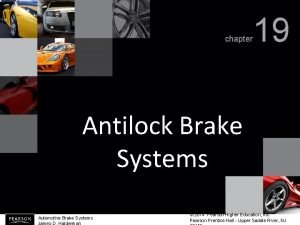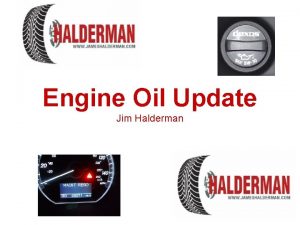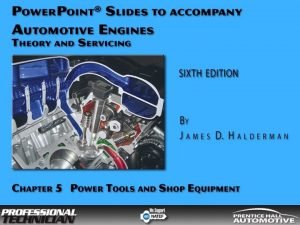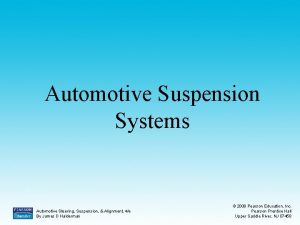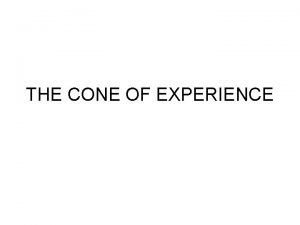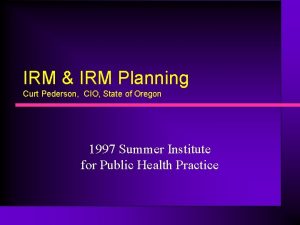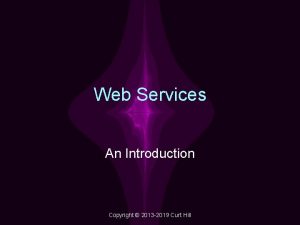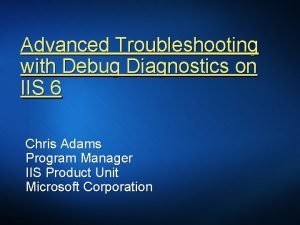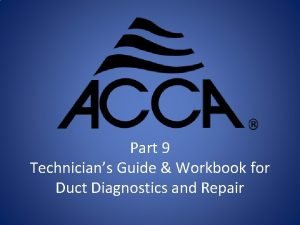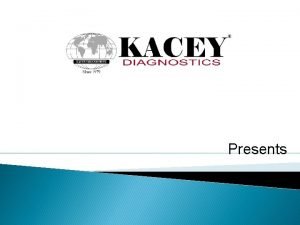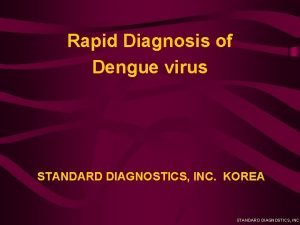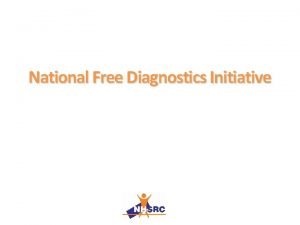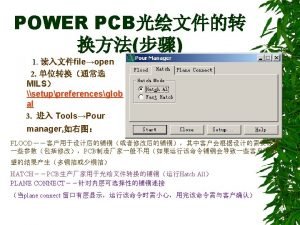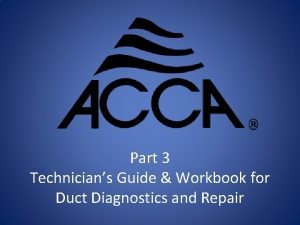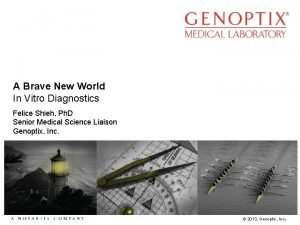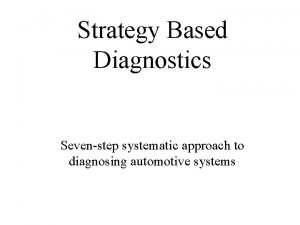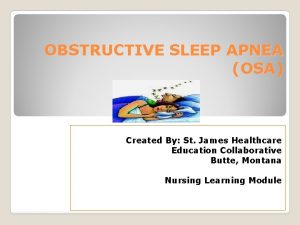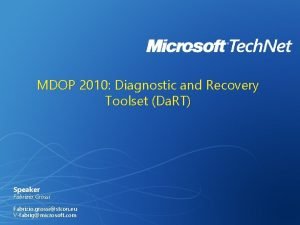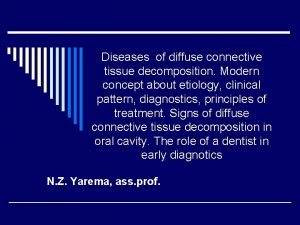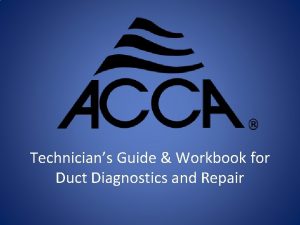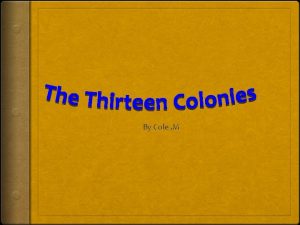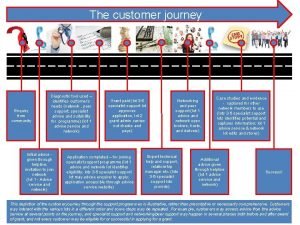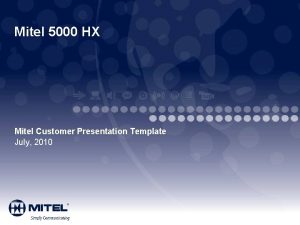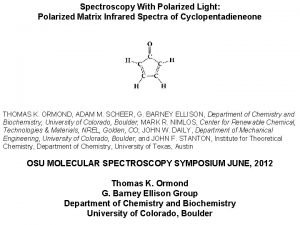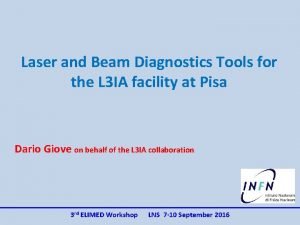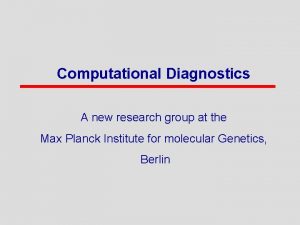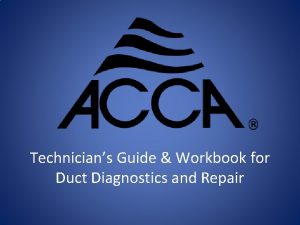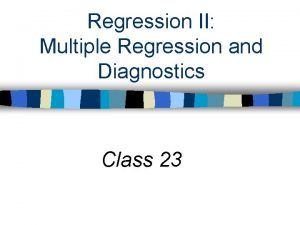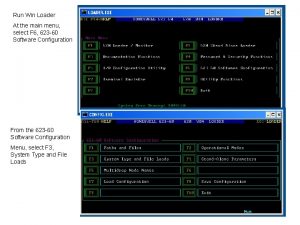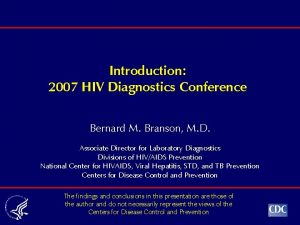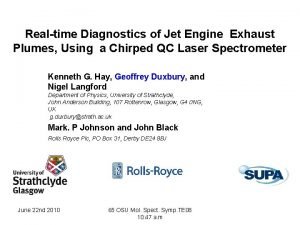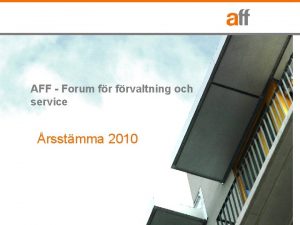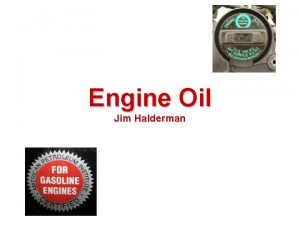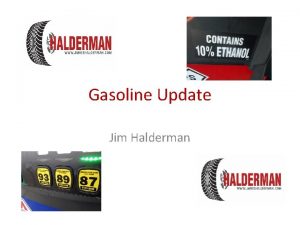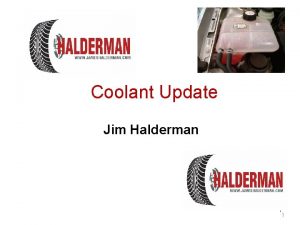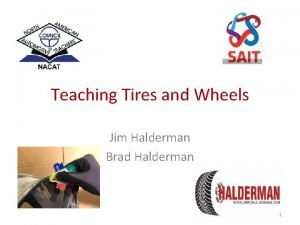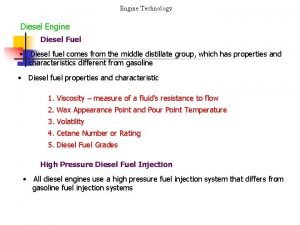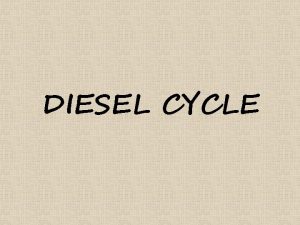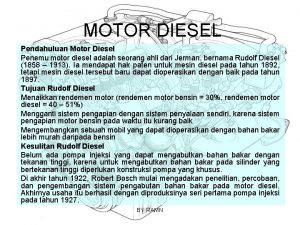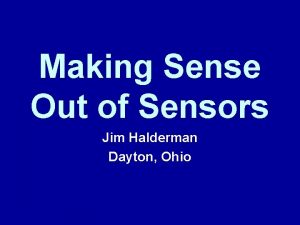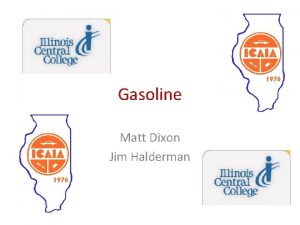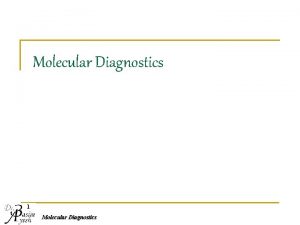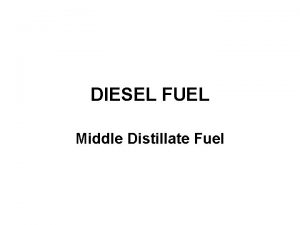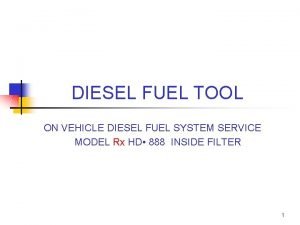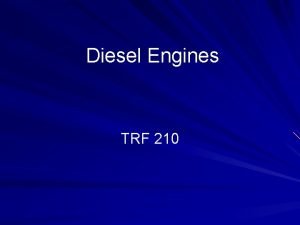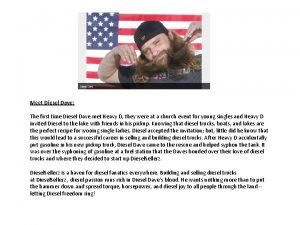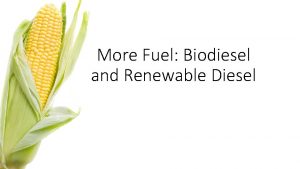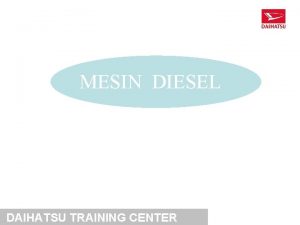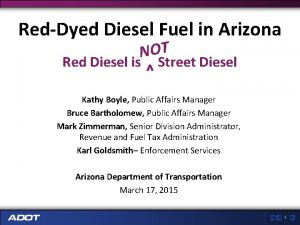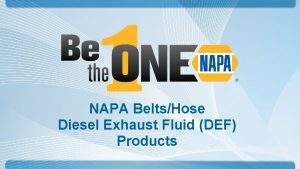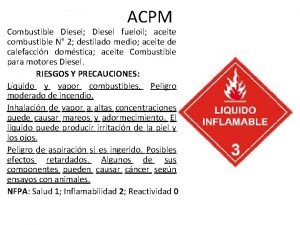Diesel Diagnostics for Gas Instructors Jim Halderman Curt























































- Slides: 55

Diesel Diagnostics for Gas Instructors Jim Halderman Curt Ward

Introductions • Jim Halderman – The Gas guy • Curt Ward – The Diesel guy

Topics to be discussed • The differences between gas and diesel engines • Care and feeding of diesels • How to begin diagnosis • Code/Monitor diagnosis • Case Studies

Differences Between Gas and Diesels

Differences Between Gas and Diesels • Tank pump- 30 -60 PSI • Fuel filter (with water separator)

What we hear • We don’t test diesels in our area! • Why should I teach this? Because: • New diesel powered cars and light duty trucks are one of the fastest growing segments in the industry. – Example: Volkswagen forecasts 100, 000 diesel sales in the United States for 2014

Diagnosis Basics • Like gasoline engines, this is more about developing a process to verify, diagnose and repair a diesel engine performance concern.

Service Information • Factory Service Information – The best – Some information is free • Aftermarket Service Information – Also good – Examples: Alldata, Mitchell, IATN, Identifix • Identifix free for a NATEF certified school

Vehicle and System Focus • For this presentation we fill focus on 4 -Stroke, Direct-Injection Engines with an exhaust aftertreatment system

Subjects your students need to understand! • • High Pressure Common Rail Injection Diesel Fuel Diesel Exhaust Fluid Diesel Motor Oil Diesel Engine Maintenance Customer Driving Habits Starting Fluid Issues

High Pressure Common Rail Fuel System • Fuel system pressures can reach as high as 30, 000 PSI • Pressures this high can inject diesel fuel directly into the skin. • Always follow safety instructions

Ultra-Low Sulfur Fuel • • • Required for use in 2007 and later engines Maximum 15 ppm sulfur content Allows use of exhaust after-treatment systems Phased in starting September 2006 Feds require labels at the pump

Diesel Fuel • • Cetane – What does this mean? Diesel Fuel Conditioning Bio. Diesel Fuel Costs

Cetane • Measure of fuel’s ignition delay – Time between injection start and combustion start • Higher Cetane = Shorter delay • Opposite of Octane Cetane Injection Time Combustion

Diesel Fuel Conditioning

Bio. Diesel • Made through process of transesterification – Glycerin separated from fat or vegetable oil • Leaves behind 2 products • Methyl Esters(Biodiesel) • Glycerin (used in soaps) • Biodiesel benefits: – No sulfur or aromatics – 78. 5% CO 2 reduction in production and use when compared to petrodiesel – Renewable resource • Biodiesel pitfalls: – Additional land usage (agriculture) – More expensive – Higher NOx

Can I use Bio. Diesel? • 2012 Ford F 250 • 2012 Volkswagen TDI

Fuel Costs • Diesel used to cost less than gasoline, now it cost more; why? • According to the United States Energy Administration "It really comes down to the fact that diesel fuel is the transportation fuel of choice outside the U. S. "It's a commodity that's in much higher demand in the rest of the world. "

Diesel Exhaust Fluid (DEF) • What is its purpose • Maintenance issues

Diesel Motor Oil • Low Ash Motor Oil • Assists in reduction of PM emissions • API CJ-4 oils meet low ash specs • Required to meet manufacturers warranty requirements

Diesel Maintenance Topics • • Fuel/Water Filters Air Filter Oil and Oil Service Engine Coolant

Fuel/Water Filters • What is the service interval? • How many filters? • Water in fuel indicator & Service • Failure to service costs thousands

Air Filter • What is the Filter Material? • What is the Micron size of the holes? • Filter Minder – the only way to check the filter for replacement!

Oil and Filter Service • Correct oil? • OE Filter? • Service interval factors – Miles – Hours – Oil life monitor

Coolant & Coolant Nitrate Service • • OE equivalant coolant? Service Interval? Nitrate Level? Filter Service?

Customer Driving Habits • Cause – Short trip driving – Long idle time • Effect – Fuel mileage – Oil Life – Life of Particulate Filter

Starting Fluid Concerns • Ether will dry up oil on cylinder walls making it harder to start • Glow plug damage • Mechanical failure • Some manufactures will allow add-on quick start systems

2007+ Diesel Emissions Changes 2006 PM 2007 2008 2009 2010 2011 2012 100% at 0. 01 -g/hp-hr NOx 50% at 0. 2 -g/hp-hr FUEL 80% at 15 PPM MAXIMUM SULFUR (UNDER VOLUNTARY COMPLIANCE OPTION) 100% at 0. 2 -g/hp-hr 100% at 15 PPM

Exhaust System (after treatment)

Diesel Oxidation Catalyst • Reduce Carbon Monoxide by up to 85% • Reduce Hydrocarbons by up to 60% • Reduces Particulate Matter by up to 20%

NOx Adsorber Catalyst (SCR) • Diesel Exhaust Fluid (ammonia) with the catalyst reduces Oxides of Nitrogen into the natural elements of Nitrogen and water

Particulate Filter (DPF) • Wall-flow design • Filters, stores, burns particulate matter • PM oxidized into CO 2 at 600 degrees F • Ash residue will remain in DPF • Will require service eventually

Typical No Code Concerns • No Start • Hard/ Slow Start/ Extended Crank • Misfire/Runs Rough/ Lacks Power

Check the Oil! • Oil level and condition can tell a LOT • If overfilled= diesel fuel in the oil • If low/dirty= Ford 7. 3 and 6. 0 Liter engines may run rough/not run because it the engine oil under high pressure that opens the injectors.

No Start • Aftermarket Anti-Theft Devices • Charge Air Cooler Concerns • Fuel Pressure and Delivery Concerns • Fuel Quality Concerns

Hard-Slow Start/ Extended Crank • Battery & Charging System Concerns • Fuel Quality and Delivery Issues • Glow Plug/ Intake Heater Concerns

Misfire/ Runs Rough/ Lacks Power • • Engine Mechanical Concerns Fuel Delivery Issues EGR Turbocharger Concerns Air Induction Problems Engine Operating Temperature Oil Pressure

Fuel Pressure Diagnosis Common Rail Systems • Low pressure system • Return Volume • High Pressure delivery

Low Pressure (example Dodge)

Fuel Return (example Dodge)

High Pressure (Scan Tool Only)

High Pressure Fuel Test

Code Diagnostics • Scan tool information varies from vehicle to vehicle and from tool to tool. • No one tool good for all vehicles (just like gas) • Factory scan tools are the best

Diesel OBDII Diagnostic Requirements • What does it take to set the code • When is it monitored • What are the requirements to make the monitor ready to run and then run after the repair process is complete to confirm diagnosis and repair

Diesel OBDII Monitors (As equipped) • • • NMHC Catalyst NOx Catalyst Misfire Fuel System Upstream Exhaust Gas Sensor Downstream Exhaust Gas Sensor NOx Sensor #1 Cold Start Strategy VVT System • • • NOx Sensor #2 PM Sensor EGR Cooler Boost Pressure Charge Air Cooler NOx Adsorber PM Filter Crankcase Ventilation Engine Cooling System

Monitor Example (Snap-On Scan Tool)

Monitor Example (Factory Scan Tool)

Case Study #1 2010 Ford Truck, 6. 4 L Engine 10, 456 Miles MIL On and Lacks Power on Acceleration Code P 2463 Particulate Filter – Soot Accumulation • Perform Manual DPF Regeneration & Clear Code • Concern caused by extended idle • •

Case Study #2 2012 Ford Truck 6. 7 L with 19, 852 Miles No Power, MIL and Maintenance Lights On Code P 204 F – Reductant System Performance Found Diesel Exhaust Fluid Reservoir empty Filled Reservoir with proper fluid & cleared code • Cause: Failure to heed warning lamps • • •

Diesel Emission Testing • Growing number of states testing • Select areas of testing within these states • Testing typically classified by vehicle weight (GVWR) • Processes include visual inspection, smoke opacity, and OBDII • Many of the same exemptions as gasoline powered vehicles

Aftermarket Programmers • Primary use to increase torque and horsepower • Typically change fuel delivery • May have a negative effect on drivetrain • May cause emissions failure at test lane

So I am interested in creating a diesel class or adding the topic to my program • Resources – ASE A 9 task list – NATEF (medium truck) task list – James Halderman @ www. jameshalderman. com – Sonny Reeves AYES@ www. autoteacher. net – Rick Escalambre @ http: //rlescalambre. com/ – Automotive Diesel Technology: Gus Wright, Pearson Publishing

Summary • Diesel is rapidly becoming a major player ($) in the aftermarket repair business. • Many similarities with GDI • Addition of this topic to most programs will enhance the students ability to earn ($) upon completion.

Clear Highways • We hope to see you at NACAT 2014 • Thanks for attending • Don’t forget to thank our hosts

Contact Information • Jim Halderman- jim@jameshalderman. com • Curt Ward- cuward@jjc. edu
 Kelsey hayes abs module identification
Kelsey hayes abs module identification James halderman crossword puzzle answers
James halderman crossword puzzle answers Halderman
Halderman Halderman
Halderman Bruner cone of experience
Bruner cone of experience Curt hinton
Curt hinton Curt jones
Curt jones Novel·les cavalleresques
Novel·les cavalleresques Curt pederson
Curt pederson Curt cam
Curt cam Improving vocabulary skills 4th edition answer key
Improving vocabulary skills 4th edition answer key Curt with requester
Curt with requester Circuit curt
Circuit curt Curtis langlotz
Curtis langlotz Iis diagnostics
Iis diagnostics Duct diagnostics
Duct diagnostics Cefapodoxime
Cefapodoxime Standard diagnostics inc
Standard diagnostics inc Kcf smart diagnostics
Kcf smart diagnostics Teleradiology
Teleradiology Maximum number of diagnostics exceeded
Maximum number of diagnostics exceeded Probalility
Probalility Duct
Duct In vitro diagnostics
In vitro diagnostics Strategy based diagnostics
Strategy based diagnostics Emc diagnostics
Emc diagnostics Ramsay scale
Ramsay scale Da toolset
Da toolset Connective tissue
Connective tissue Cpvc ductwork
Cpvc ductwork Cole diagnostics jobs
Cole diagnostics jobs Customer journey diagnostics
Customer journey diagnostics Mitel 5000 hx
Mitel 5000 hx Molecular diagnostics
Molecular diagnostics Bio synex
Bio synex Laser beam diagnostics
Laser beam diagnostics Computational diagnostics
Computational diagnostics Duct diagnostics
Duct diagnostics Casewise diagnostics
Casewise diagnostics Win loader
Win loader Hiv diagnostics conference
Hiv diagnostics conference Realtime diagnostics
Realtime diagnostics Prolight diagnostics forum
Prolight diagnostics forum Questions d'entretiens ergothérapeute
Questions d'entretiens ergothérapeute Imaginary gas
Imaginary gas Gas leaked in bhopal gas tragedy
Gas leaked in bhopal gas tragedy Difference between ideal gas and real gas
Difference between ideal gas and real gas Differences between ideal gas and real gas
Differences between ideal gas and real gas Volume molare
Volume molare Contoh soal kinetika kimia orde 1
Contoh soal kinetika kimia orde 1 Pseudo reduced specific volume
Pseudo reduced specific volume Ideal gas vs perfect gas
Ideal gas vs perfect gas Flue gas desulfurisation gas filter
Flue gas desulfurisation gas filter Gas exchange key events in gas exchange
Gas exchange key events in gas exchange Bhopal gas tragedy reason
Bhopal gas tragedy reason Poisonous gas leaked in bhopal gas tragedy
Poisonous gas leaked in bhopal gas tragedy
